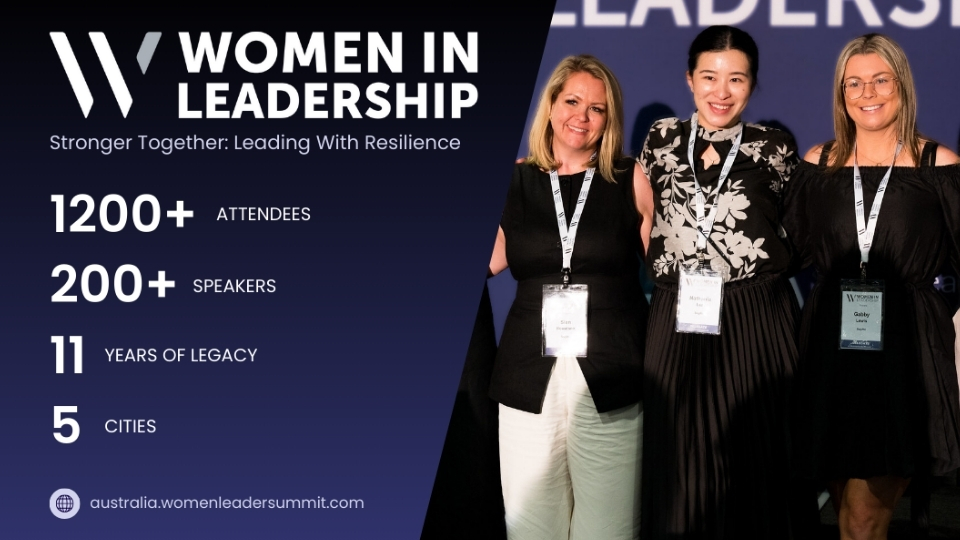The confidence gap: Why women still undervalue their leadership potential
Staff Writer | October 6, 2025

Despite decades of progress, many women still underestimate their leadership potential — not because they lack the skills or experience, but because of a lingering confidence gap.
Research shows women are less likely than men to put themselves forward for promotions, negotiate pay rises, or speak up in high-stakes settings, even when they’re equally or more qualified.
This gap, fuelled by imposter syndrome and self-doubt, has real consequences for women’s career progression and for the diversity of leadership at large. So, how can women recognise their value, advocate for themselves, and shift the narrative?
What is the confidence gap?
The “confidence gap” refers to the difference between how capable women feel and how capable they actually are.
Studies consistently show that women tend to underestimate their abilities, while men are more likely to overestimate theirs. In professional contexts, this often means women hesitate to apply for higher-level roles, pitch bold ideas, or negotiate salaries — even when they are more than qualified.
According to leadership expert Elizabeth Lie, Director at Women Leaders Institute, the confidence gap is the space between competence and self-belief.
“Even highly capable women leaders often underestimate their potential or second-guess their value. This persists because of structural barriers, subtle workplace biases, and the pressure to over-perform in environments that still question women’s authority,” she said.
“When opportunities for sponsorship or stretch roles are harder to access, confidence is harder to build. The confidence gap isn’t a lack of ambition; it’s a mindset barrier shaped by systemic bias.”
The role of imposter syndrome
Imposter syndrome — the persistent feeling that you’re “not enough” or that your success is undeserved — is closely linked to the confidence gap. Many women report second-guessing their achievements or attributing success to luck rather than skill.
This self-doubt can be amplified by workplace cultures that value assertiveness over collaboration or reward traditionally “masculine” leadership traits.
Lie said a simple strategy to combat imposter syndrome is to separate feelings from facts: write down the evidence of your impact and return to it when self-doubt creeps in.
“Remember this is common among high performers and you can quiet the inner critic by focusing on evidence rather than emotion. Organisations should also normalise conversations about imposter syndrome so women know they’re not alone in experiencing it,” she said.
Real-world consequences
The confidence gap isn’t just a personal hurdle; it has tangible effects on careers and organisations. Women who undervalue themselves may miss out on promotions, pay increases, or opportunities to lead major projects. This contributes to persistent gender pay gaps and underrepresentation in executive roles.
For organisations, a lack of confident female leaders means less diversity of thought and decision-making, which studies show can negatively affect innovation and business performance.
Closing the gap: Strategies for women
Lie said one shift is recognising that confidence isn’t about feeling ready, it’s about acting despite discomfort. A useful mindset shift is moving from “doer” to “leader” – thinking strategically about influence, value creation, and impact rather than just tasks.
“On a practical level, come to conversations prepared with evidence of your contribution, practise making a clear ask, and don’t rush to fill the silence afterwards. Confidence isn’t a personality trait; it’s a practice you can build every day,” she said.
While systemic change is essential, women can take proactive steps to close their own confidence gaps, such as:
- Self-advocacy: Clearly communicating accomplishments, asking for promotions, and negotiating pay are crucial skills.
- Reframing self-doubt: Accepting feelings of uncertainty without letting them dictate decisions.
- Mentorship and sponsorship: Seeking allies and champions who can offer guidance and open doors.
- Skill-building: Investing in leadership, public speaking, and negotiation training boosts confidence and competence.
What organisations can do
Companies also play a pivotal role. Mentorship programs, leadership training, bias awareness workshops, and transparent promotion pathways can all help women feel supported and capable. Creating a culture where women’s contributions are recognised and rewarded helps close the confidence gap not just individually, but systemically.
“Companies need to focus on the transitions where women are most likely to doubt themselves: moving into management, leading larger teams, or stepping into executive roles. That means creating fair access to stretch opportunities, ensuring feedback is focused on outcomes rather than style, and providing visible sponsorship as women move up,” Lie said.
“It’s also important to recognise that the confidence gap doesn’t look the same for every woman. For First Nations women, women of colour, migrant women, queer women, or women with disabilities, the challenges are compounded.”
This is why building confidence is not just about “fixing the individual”, adds Lie. She said companies also need to address inequities in pay, progression, and sponsorship while also creating psychologically safe spaces where women can take risks without fear of career-ending consequences.
“Intersectional allyship is key to ensuring all women feel seen, supported, and backed as they step into leadership,” she said.
The confidence gap is real, but it is not immutable. By understanding the roots of self-doubt, adopting strategies to advocate for themselves, and working within organisations committed to equity, women can step confidently into leadership roles.
Closing the gap benefits not only individual women, but the organisations and communities they lead — ensuring leadership is truly diverse, dynamic, and inclusive.

Learn more about leadership at the Women in Leadership Summit
The 11th annual Women in Leadership Summit, taking place from November 25-27, 2025 in Adelaide, Brisbane, Melbourne, Perth, and Sydney, equips your team with the tools and mindset to drive high performance and deliver impact in your organisation.
Whether you’re developing your rising stars or empowering senior executives to drive transformation, this summit offers the structure and inspiration to accelerate their impact.
With the powerful theme of Stronger Together: Leading with Resilience, this year’s summit is a cross-sector event that enables your team to translate strategic leadership insights into action.
Sponsored
We have a request
SHE DEFINED’s journalism is independent and we’re committed to elevating the voices of women by putting them front-and-centre in our stories and giving them a platform to speak up.
Quality journalism and editorial content takes time, money and resources to create, which is why your support matters. We don’t have a paywall or exclusive subscriptions because we believe in keeping our stories open to everyone.
Help support our mission by making a financial contribution today.






